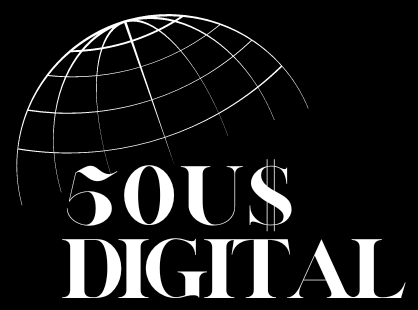Devices in everyday life have seamlessly integrated into our routines, influencing how we communicate, work, and play. Whether through smartphones, smart homes, or wearable tech, these technologies are revolutionizing our daily experiences. As we explore their various impacts, it’s essential to consider how they shape our interactions and improve efficiency.
“`html
How Smartphones Revolutionize Communication
Smartphones have dramatically changed the landscape of communication, offering flexibility, convenience, and connectivity at our fingertips. With an array of applications like messaging platforms, social media, and video calls, people are able to maintain relationships and communicate effectively regardless of geographical barriers.
One pivotal aspect of smartphones is their ability to provide instant communication. Apps like WhatsApp, Telegram, and iMessage allow users to send texts, images, and videos instantly. This instant nature of communication has made staying in touch easier and more efficient than ever before.
Furthermore, smartphones have enabled the integration of multimedia elements into our communication methods. Social media platforms such as Instagram, Snapchat, and TikTok make it possible to share visual content easily, fostering a new era of communication that’s as visual as it is textual. These elements have not only made communication more engaging but have also opened up avenues for creativity and expression.
Smartphones have also provided a platform for digital collaboration. Through applications like Slack, Microsoft Teams, and Zoom, smartphones become a tool for professional collaboration, breaking down barriers of traditional office communication. This shift is evident in work-from-home setups, where smartphones play a critical role in maintaining workplace dynamics remotely.
The downside, however, is the growing addiction and dependence on smartphones. With constant notifications and an overwhelming influx of information, it’s crucial to manage screen time and prioritize digital well-being.
The Rise of Smart Homes
The concept of smart homes is becoming increasingly common, transforming the way we interact with our living spaces. Devices like smart speakers, security cameras, and automated light systems are no longer futuristic concepts but are part of everyday life, enhancing convenience and security.
Smart speakers like Amazon Echo and Google Home offer hands-free control over various devices in the house. With simple voice commands, users can play music, control appliances, and even manage their schedules, demonstrating the seamless integration of technology into our daily routines.
Moreover, automated security systems have become a staple in smart homes. Devices such as Ring doorbells and Nest cameras provide real-time surveillance, ensuring the resident’s security and peace of mind. These systems can be remotely accessed through smartphones, further illustrating the interconnectedness of modern devices.
Smart homes also differ in energy management. With smart thermostats and lighting, users can optimize energy consumption, leading to potential cost savings and environmental benefits. These devices learn user behaviors and preferences, adjusting settings accordingly to achieve optimal energy efficiency.
Despite the numerous advantages, smart homes do pose privacy concerns. As these devices collect a significant amount of personal data, it’s crucial to understand their privacy policies and protect our data from potential breaches.
Wearable Tech and Health Tracking
Wearable technology has ushered in a new era of personal health and fitness tracking, with devices like fitness trackers and smartwatches becoming popular tools for maintaining a healthier lifestyle.
Fitness trackers such as Fitbit, Garmin, and Apple Watch are worn on the wrist and monitor a variety of health metrics. They track steps, physical activity, heart rate, and even sleep patterns, providing users with valuable insights into their health and fitness levels. These insights allow users to set goals, monitor progress, and stay motivated.
The development of health-centric applications on these devices further enhances their appeal. Apps that track calorie intake, water consumption, and workout routines aid users in maintaining a balanced lifestyle. The accessibility of this data on one’s wrist makes it easier to integrate health tracking into daily routines.
Moreover, wearable tech has expanded into medical applications. Devices that monitor blood oxygen levels, ECG, and even stress levels are becoming more prevalent, offering real-time health data and alerts for potential health issues. This proactive approach allows individuals to manage their health more efficiently and effectively.
However, the reliance on wearables comes with its challenges. Issues related to data accuracy, device dependency, and user privacy should be considered to ensure a balanced and responsible use of wearable technology.
Devices in the Workplace: A New Era
The workplace has undergone significant transformation with the advent of various devices designed to increase productivity and streamline operations. From computers and tablets to specialized software, these tools have created a dynamic shift in how businesses operate and employees work.
Computers and laptops remain indispensable, serving as the backbone of office work. They enable employees to perform tasks with ease and efficiency. Software solutions, such as project management tools like Asana or Trello, enhance coordination and collaboration across teams, ensuring projects meet their deadlines and objectives.
Tablets and smartphones have introduced an element of mobility in the workplace. Employees can work remotely, accessing essential documents and communication tools anytime, anywhere. This flexibility not only boosts productivity but also improves work-life balance.
Additionally, the rise of automation and machine learning in workplace devices has optimized processes substantially. Automated systems handle repetitive tasks, allowing employees to focus on more strategic duties. This shift towards a tech-driven workplace has rendered operations more efficient and reduces human error.
Nonetheless, the integration of technology in the workplace raises concerns over job displacement and the need for ongoing learning and adaptation. Organizations must balance technological advancements with workforce development to mitigate these challenges effectively.
Visit 50us Digital Marketing Agency
Want to elevate your business in today’s digital age? Look no further than 50us Digital Marketing Agency. We specialize in transforming your online presence with top-notch digital marketing strategies, creating sleek and functional websites, and crafting compelling sales pages. Explore the possibilities with our comprehensive ecommerce solutions and engaging blogs. Our expertise also extends to managing paid traffic campaigns tailored to increase your sales and expand your customer base. Visit our website at 50us.top or follow us on Instagram at @agency50usdigital. Partner with us to unlock new heights in your business growth strategy.
“`
















